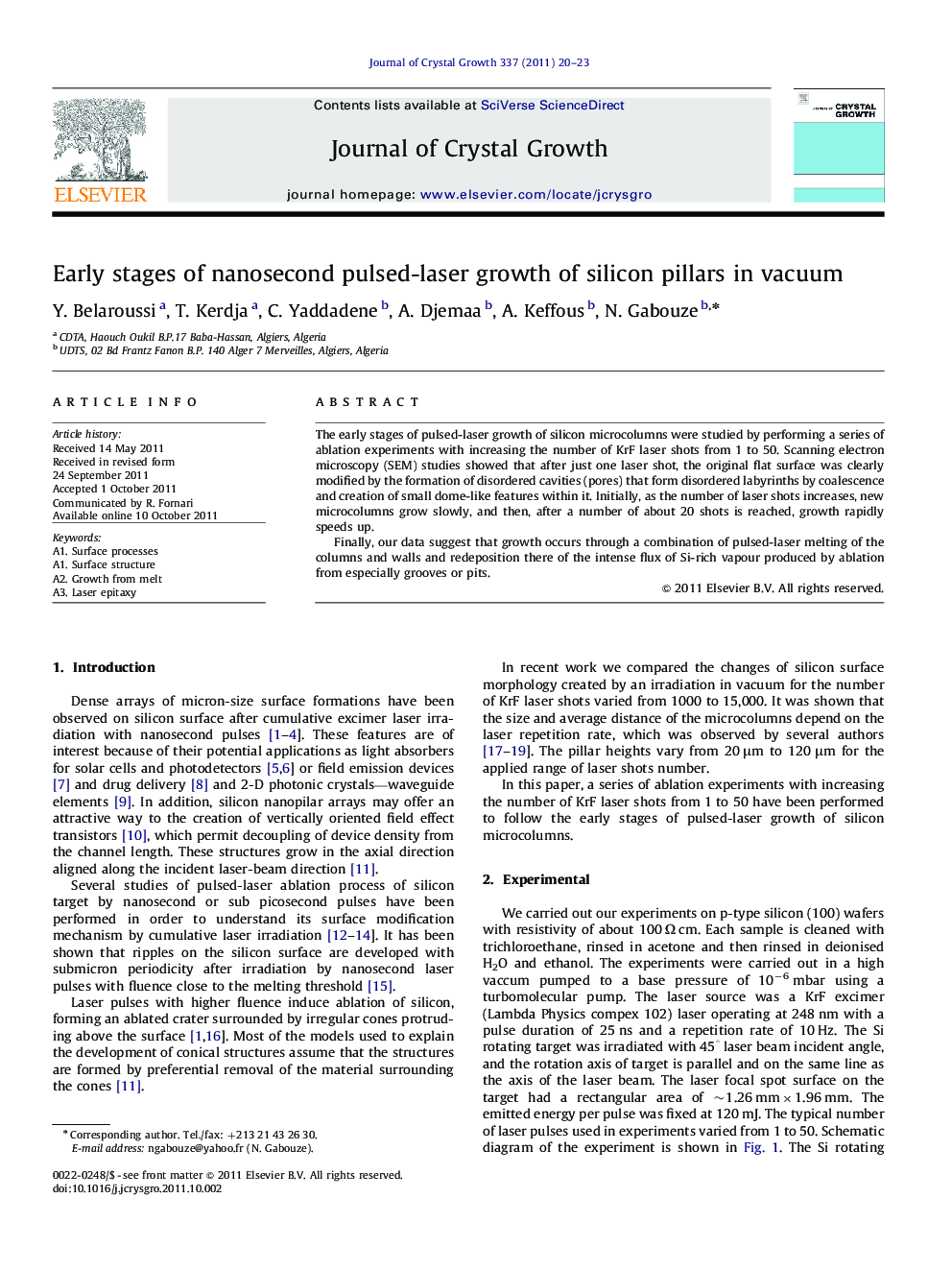| Article ID | Journal | Published Year | Pages | File Type |
|---|---|---|---|---|
| 1791896 | Journal of Crystal Growth | 2011 | 4 Pages |
The early stages of pulsed-laser growth of silicon microcolumns were studied by performing a series of ablation experiments with increasing the number of KrF laser shots from 1 to 50. Scanning electron microscopy (SEM) studies showed that after just one laser shot, the original flat surface was clearly modified by the formation of disordered cavities (pores) that form disordered labyrinths by coalescence and creation of small dome-like features within it. Initially, as the number of laser shots increases, new microcolumns grow slowly, and then, after a number of about 20 shots is reached, growth rapidly speeds up.Finally, our data suggest that growth occurs through a combination of pulsed-laser melting of the columns and walls and redeposition there of the intense flux of Si-rich vapour produced by ablation from especially grooves or pits.
► Silicon microcolumns were growth by early stages of pulsed-laser KrF laser from 1 to 100 shots. ► The original flat surface was modified by formation of disordered cavities and disordered labyrinths. ► An inhomogeneous nucleation of microcolumns was obtained; as the number of laser shots increase. ► New initially grow slowly but growth increases rapidly when 20 lasershots were reached.
